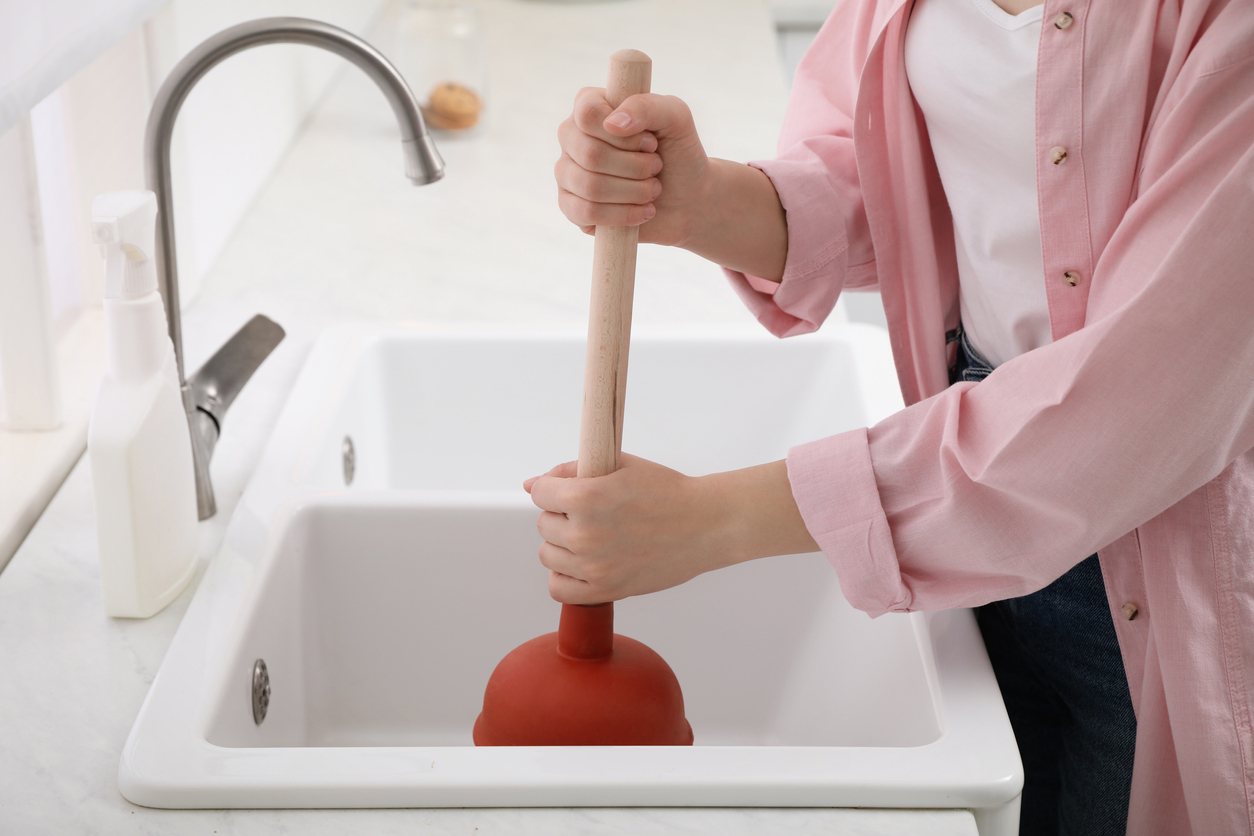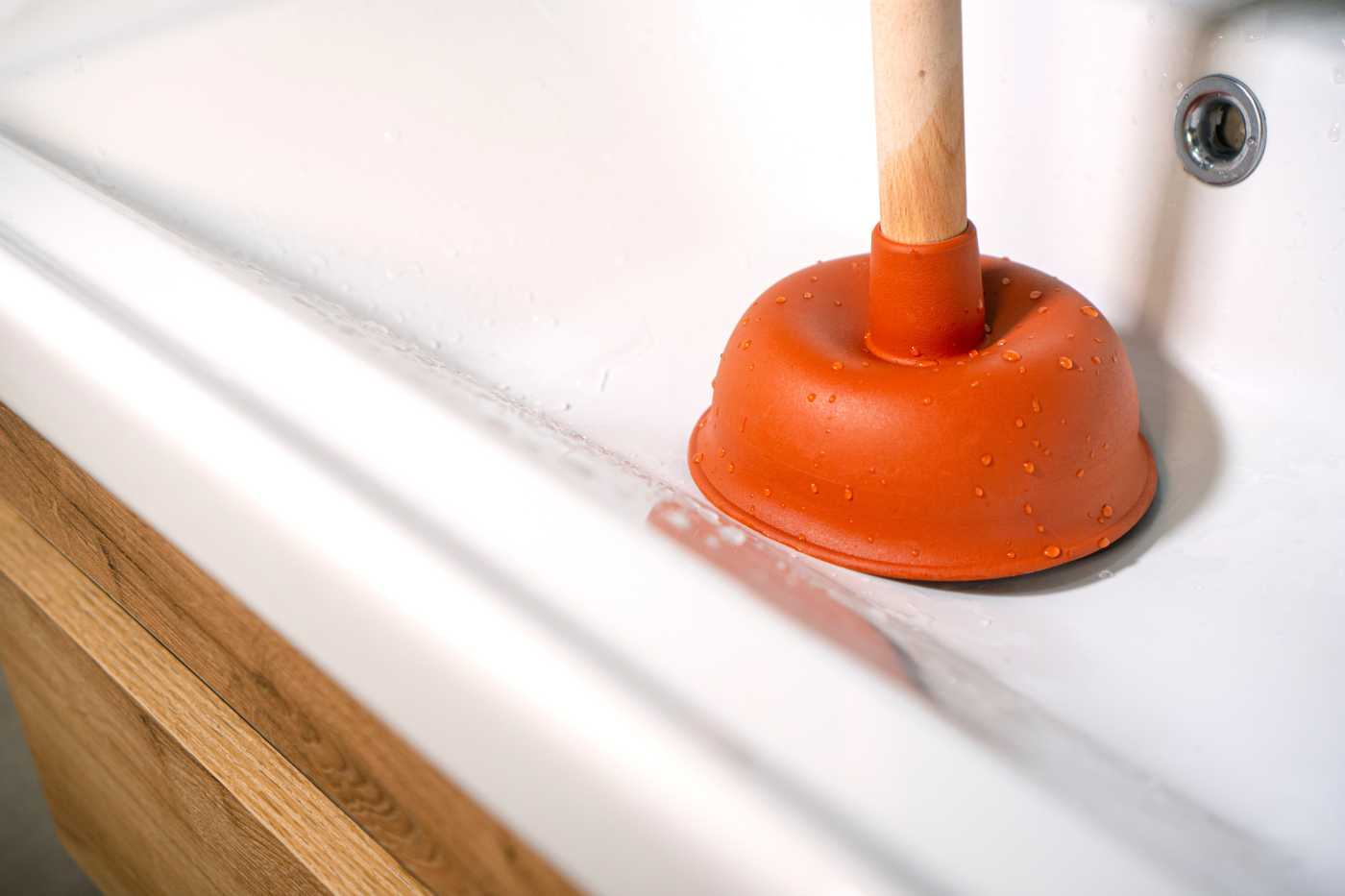Mastering Plunger and Drain Cleaners: Pro Strategies
Mastering Plunger and Drain Cleaners: Pro Strategies
Blog Article
Are you interested in insight on How to Unclog Your Sink with a Plunger?

Introduction
Proper maintenance of household drains is essential for preventing obstructions and making certain smooth water circulation. One of the trick devices in every property owner's toolkit is the plunger, along with different drain cleansers developed to take on persistent clogs successfully. This short article discovers exactly how to make use of plungers and drainpipe cleaners successfully to maintain your drains moving freely.
Section 1: Recognizing Plungers
Kinds of Plungers
There are several types of bettors available, each created for various types of drains and blocks. One of the most usual kinds include cup plungers, flange plungers, and accordion plungers.
Exactly How Plungers Job
Bettors work with the concept of developing stress and suction to displace obstructions. When effectively used over a drainpipe, they produce a vacuum that can pull out debris or separate blockages.
Picking the Right Bettor
Selecting the best plunger relies on the kind of drainpipe and the nature of the clog. Mug plungers are optimal for sinks and tubs, while flange bettors are better matched for toilets due to their design.
Usual Mistakes with Plungers
Preventing these mistakes makes certain effective plunging: improper seal around the drainpipe, inadequate force, and unclear bordering debris.
Area 2: Making Use Of Plungers Efficiently
Preparation
Prior to plunging, make certain the plunger covers the drain totally and forms a limited seal. Clear any noticeable debris around the drainpipe opening.
Technique
Begin with gentle plunging activities to develop suction. Rise pressure slowly, making use of a stable rhythm. Repeat as essential until the drainpipe gets rid of.
Troubleshooting Tips
If plunging does not function, try changing the seal, using oil jelly for a better seal, or using a different sort of bettor.
Section 3: Understanding Drain Cleansers
Kinds Of Drainpipe Cleaners
Drain pipes cleansers can be chemical or chemical. Chemical cleaners make use of strong chemicals to liquify obstructions, while chemical cleansers use all-natural enzymes to break down organic matter.
Just How Drain Cleaners Work
Chemical cleansers react with obstructions to dissolve them, while chemical cleaners break down natural products like hair and grease without hurting pipelines.
Security Factors to consider
Always use handwear covers and eye protection when utilizing chemical drainpipe cleansers. Guarantee appropriate air flow and follow producer directions meticulously.
Eco-Friendly Alternatives
Consider using vinegar and baking soda or enzyme-based cleaners for environment-friendly choices that are more secure for pipelines and the environment.
Section 4: Utilizing Drainpipe Cleaning Company Properly
Application Techniques
Put chemical cleansers directly into the drainpipe opening. Permit them to work for the suggested time prior to purging with hot water. Enzymatic cleansers need to rest overnight.
Safety measures
Prevent blending various types of cleaners, as this can create toxic fumes. Never ever use chemical cleaners combined with a bettor, as splashing can happen.
Handling Stubborn Blockages
For persistent blockages, take into consideration making use of a plumbing snake or calling a specialist plumbing professional to prevent damage to pipelines.
Verdict
In conclusion, comprehending just how to make use of plungers and drain cleaners successfully is crucial for maintaining healthy plumbing systems. By choosing the right devices and techniques, homeowners can tackle small obstructions and protect against significant pipes problems down the line.
How To Properly Use A Plumbing Snake To Clear Drains
When any drain clogs in our home arise, we tend to gravitate toward the plunger and little else. In cases where the plunger and its vacuum-created pressure are not able to clear clogs, many immediately move to harmful chemicals or simply call their plumber to fix the issue.
we’re happy to help with all drain cleaning needs and concerns. This includes informing you on a few other home remedies you may have at your disposal for minor to moderate clogs, one of which is the use of a plumbing snake. Many people have never used one of these before – let’s go over the steps to take when your drain clogs and you have a plumbing snake available.
Attempt Plunger Use
The first step here, as we noted above, should indeed be to grab your plunger when you notice a drain clog and attempt to resolve it this way. If you’re unsure how to use a particular type of plunger, our plumbers can answer any questions you have. If this doesn’t do the trick, however, you move on to the snake.
Locate And Prepare Snake
A plumbing snake is a metal or plastic device that’s generally about a quarter of an inch thick. It’s design with significant extensions, meant to reach down into your clogged drain and push the clog out. Snakes also contain drain augers that will latch onto and push stubborn blockages.
If your plunger doesn’t clear a clog, locate your snake and bring it to the drain in question. We also recommend keeping a bucket nearby to collect the clog once you pull it out, plus we’d advise wearing goggles and possibly protective gloves.
Feed Snake
Once you’re ready to go, feed the snake slowly down the drain, using the crank device it comes with to keep it moving until it finds the clog. Once this happens, much of the clog will be latched onto the coil so you can pull it out, while the rest will simply break up and flow downward.
Detach Debris
Remove the snake slowly from the drain, and once you’ve done so, pick off any debris that’s stuck to the coil. This is another area where wearing gloves is a must.
Flush Drain
Finally, take a few minutes to ensure the snake has done its job correctly. If you’ve been using it on a toilet, flush the toilet a couple times and make sure everything flows well. If you’ve used it on a different drain, flush it with some room temperature water.
https://www.mybuddytheplumber.com/blog/how-to-properly-use-a-plumbing-snake-to-clear-drains/

Application Techniques
Put chemical cleansers directly into the drainpipe opening. Permit them to work for the suggested time prior to purging with hot water. Enzymatic cleansers need to rest overnight.
Safety measures
Prevent blending various types of cleaners, as this can create toxic fumes. Never ever use chemical cleaners combined with a bettor, as splashing can happen.
Handling Stubborn Blockages
For persistent blockages, take into consideration making use of a plumbing snake or calling a specialist plumbing professional to prevent damage to pipelines.
Verdict
In conclusion, comprehending just how to make use of plungers and drain cleaners successfully is crucial for maintaining healthy plumbing systems. By choosing the right devices and techniques, homeowners can tackle small obstructions and protect against significant pipes problems down the line.
How To Properly Use A Plumbing Snake To Clear Drains
When any drain clogs in our home arise, we tend to gravitate toward the plunger and little else. In cases where the plunger and its vacuum-created pressure are not able to clear clogs, many immediately move to harmful chemicals or simply call their plumber to fix the issue.
we’re happy to help with all drain cleaning needs and concerns. This includes informing you on a few other home remedies you may have at your disposal for minor to moderate clogs, one of which is the use of a plumbing snake. Many people have never used one of these before – let’s go over the steps to take when your drain clogs and you have a plumbing snake available.
Attempt Plunger Use
The first step here, as we noted above, should indeed be to grab your plunger when you notice a drain clog and attempt to resolve it this way. If you’re unsure how to use a particular type of plunger, our plumbers can answer any questions you have. If this doesn’t do the trick, however, you move on to the snake.
Locate And Prepare Snake
A plumbing snake is a metal or plastic device that’s generally about a quarter of an inch thick. It’s design with significant extensions, meant to reach down into your clogged drain and push the clog out. Snakes also contain drain augers that will latch onto and push stubborn blockages.
If your plunger doesn’t clear a clog, locate your snake and bring it to the drain in question. We also recommend keeping a bucket nearby to collect the clog once you pull it out, plus we’d advise wearing goggles and possibly protective gloves.
Feed Snake
Once you’re ready to go, feed the snake slowly down the drain, using the crank device it comes with to keep it moving until it finds the clog. Once this happens, much of the clog will be latched onto the coil so you can pull it out, while the rest will simply break up and flow downward.
Detach Debris
Remove the snake slowly from the drain, and once you’ve done so, pick off any debris that’s stuck to the coil. This is another area where wearing gloves is a must.
Flush Drain
Finally, take a few minutes to ensure the snake has done its job correctly. If you’ve been using it on a toilet, flush the toilet a couple times and make sure everything flows well. If you’ve used it on a different drain, flush it with some room temperature water.
https://www.mybuddytheplumber.com/blog/how-to-properly-use-a-plumbing-snake-to-clear-drains/

As a passionate reader on Tips on How to Effectively Use a Plunger, I think sharing that piece of content was sensible. Sharing is caring. Helping others is fun. Many thanks for being here. Revisit us soon.
Visit Website Report this page